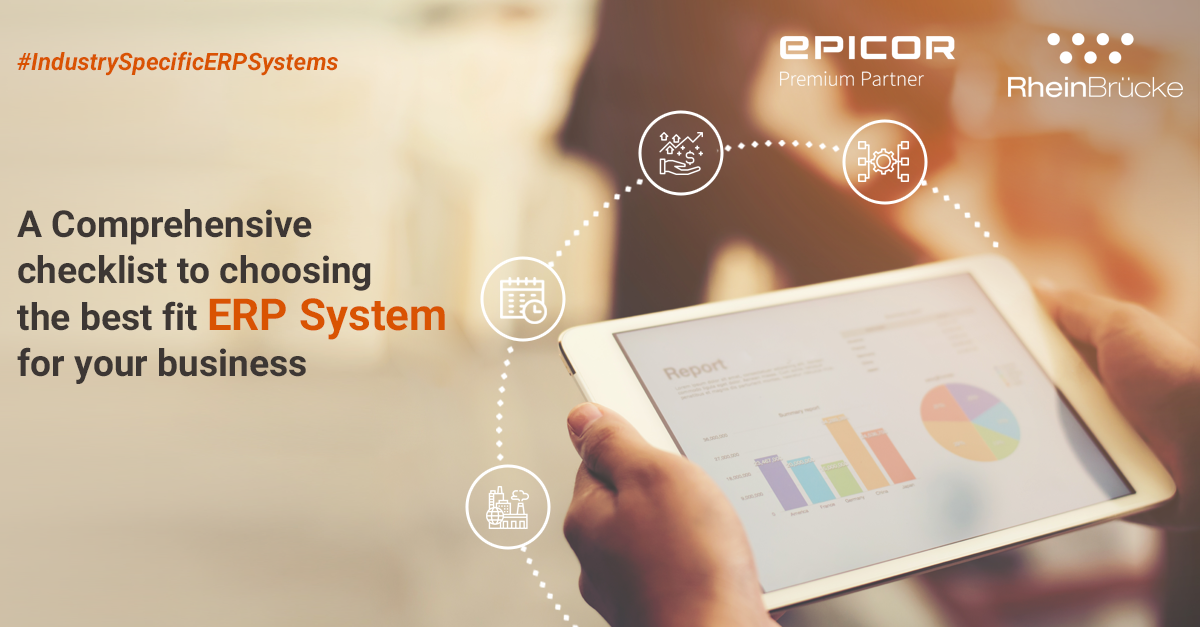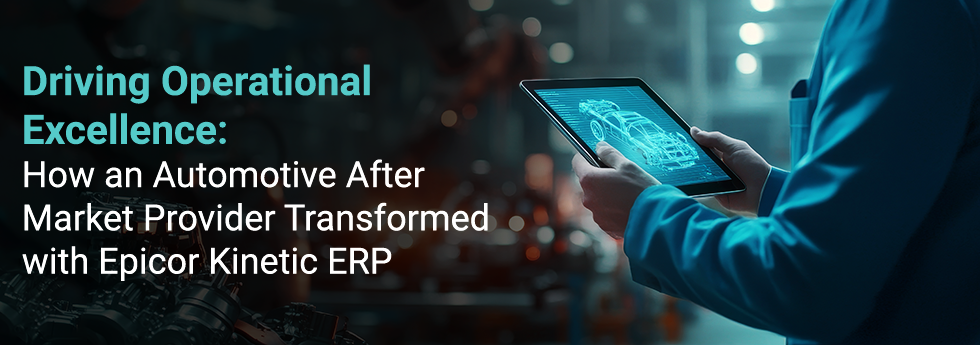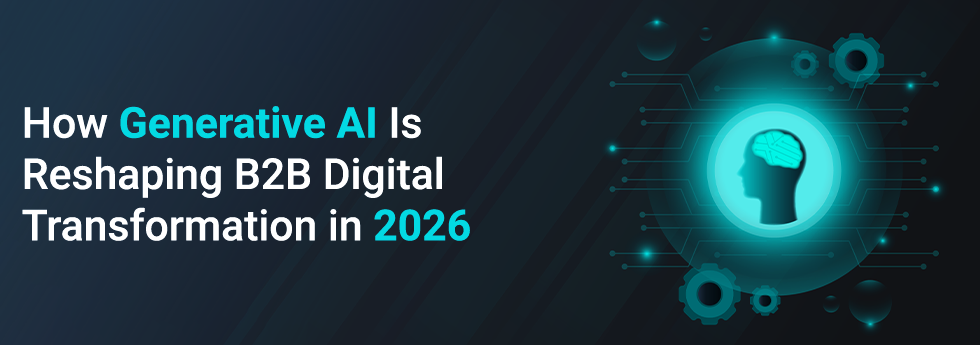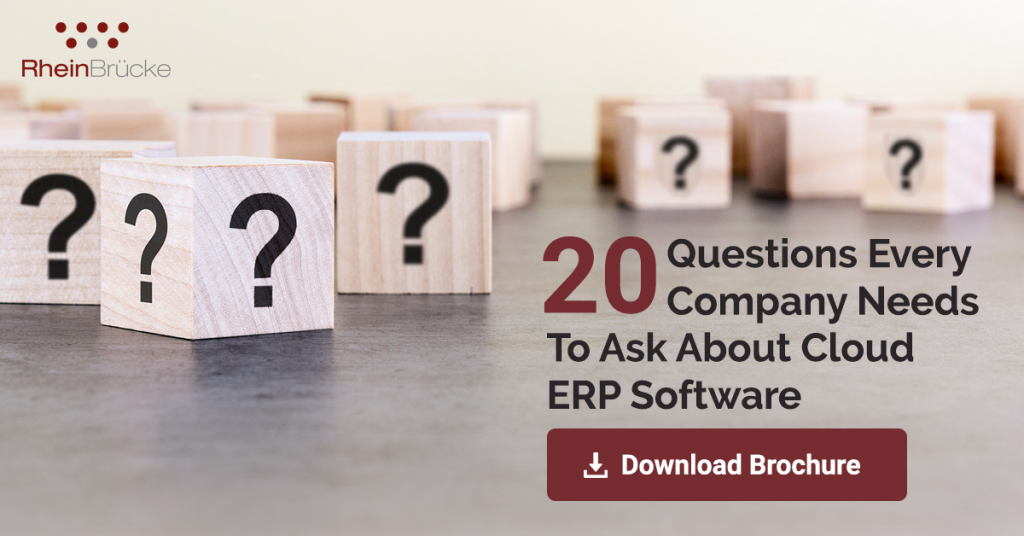
Have you decided that implementing an ERP (Enterprise Resource Planning) system or switching to a new one could benefit your business and is that the reason you have landed here? Well, congratulations on your decision, and the happy news is that you have crossed the first milestone in your journey to implementing an ERP software. An ERP system can effectively simplify your business processes by integrating information and automating processes across functional areas of the business. In this blog, we gear you up to cross the second milestone of your journey, choosing the right ERP system for your business.
Continue reading to know about how to choose the right ERP software for your company
Being one of the critical and most significant IT investments, choosing the right ERP for your business becomes a strategic decision where there can be no missteps. An ERP system is huge and complex, impacting every single part of your business and can make or break your organization. Hence, it is important you get it right from the beginning, as a wrong choice can wreak havoc on your business. According to a Panaroma research, 53% of customers are satisfied with their ERP system, 7% are dissatisfied, 3% are very dissatisfied, and 38% have neutral opinions. Poor requirements definition and a lack of organizational alignment before the implementation process were major reasons that drove vendor dissatisfaction.
With a plethora of ERP vendors currently available in the market, making the right decision becomes even more challenging. The thought of sorting through the many available options to pick the right one for your business can be overwhelming and is often easier said than done. But, with a thoughtful checklist, it can be much easier. To help you in the process, we have a comprehensive checklist for choosing the right ERP system for your Business.
8 Step Checklist for Choosing the Best Fit ERP System for your Business
1. Define your business requirements
The first step in selecting the appropriate ERP system for your business is evaluating your business processes and setting your expectations for implementing an ERP system. Identify bottlenecks and pain points in your current system and determine how ERP software can fit into your process to transform your operations and improve business performance.
2. Establish an ERP vendor selection criteria
Now that you have identified your business needs, you should identify features and functions in an ERP system that can help you sort them out. Visualize what features the ideal ERP for your business should offer and list them out.
Here is a list of factors to be considered for your ERP selection criteria:
Deployment Option
It refers to whether you want a cloud or on-premise ERP. Cloud based ERP seems to be the industry trend in recent years due to benefits like cost savings, easy deployment, more mobility, reduced risks, and scalability. According to the Panaroma 2023 ERP report, 64.5% of organizations prefer a cloud ERP software providers instead of on-premise.
Industry-specific functionalities
Look for any industry-specific functionalities that you want in your ERP system. For example, a Cloud ERP for discrete manufacturing, can help in managing your specific business needs like Material Requirements Planning, Bill of Material requirements, features supporting your manufacturing methodology like lean manufacturing features, etc. As per Epicor’s 2022 report, 95% of organizations believe their ERP system should be tailored to their specific requirements. There are many industry-specific ERP systems in the market today and choosing an ERP system with industry-specific functionalities that you are looking for can minimize the need for customizations to your ERP.
Scalability
An ideal ERP system is able to grow with your business and adapt to your growing business needs. In addition to meeting your current needs, the system should scale to support your future needs when you expand – which may mean more users or capabilities.
Integrations
The ERP solution you select should easily integrate with your current software that you would like to use alongside your ERP or what you may have to use in the future. Only if the ERP system integrates well with your other systems, can you enjoy a fully automated end-to-end software solution, which is the real purpose of implementing an ERP system.
Flexibility and customizations
Despite having comprehensive functionalities, the ERP you choose should be flexible enough to allow customizations to meet your specific needs. According to Panorama Consulting’s 2022 ERP Report, just 3.6% of organisations use ERP software without any modifications, while the majority of ERP users do moderate to substantial customization.
User-friendliness
Your investment in the ERP gets diluted if you can’t use it to its full extent. It’s vital that the users of the ERP, your employees, can use it effectively. Their ability to interact with the system will impact the ROI of the system. It should support quicker user adoption with a clean interface that is easy to navigate. Training tools and learning materials should also be readily available.
Support for the latest technology trends
A top cloud ERP software should embrace or at least support integration with the latest technologies like Internet of Things (IoT), Artificial Intelligence, etc. to help you keep pace with the emerging trends and stay competitive.
Reporting and analytics
Modern businesses demand reports that help boost your decision-making capabilities. Hence, it would help if you looked for ERP systems including the latest reporting and analytics features like Business Intelligence, real-time tracking, and predictive analytics that help transform the data into actionable insights to improve your business strategies.
3. Outline a budget and timescale
According to a 2022 ERP research, the average budget per user for an ERP project is $9,000. Have a clear idea on how much you can spend on the ERP system and have an outline of when you would like your ERP solution to go live. Time for ERP implementation best practices can range anywhere from a few months to even years, based on the size of the business, number of locations, and customization required. When working on the budget, you have to consider the potential hidden costs outside of purchasing the software, including costs for maintenance, resources required, training costs, hardware in case of an on-premise deployment, and other utilities that may be required.
4. Create a list of ERPs fulfilling your selection criteria
So, now that you have your selection criteria and budget set, you can shortlist the ERPs that meet your requirement criteria. Check out our blog on Top 7 ERP software to learn more about the market’s leading ERPs.
5. Evaluate and shortlist your ERP vendor options
There may be many vendors meeting your criteria. To select the best Cloud ERP software, you must thoroughly evaluate the vendor options. Consider things like vendor reputation, the vendor’s past experience in your industry, the vendor’s technology direction and viability, customer satisfaction, support, and training offered, the total cost of ownership etc.
Contact each of the vendors you have shortlisted and have a conversation with them to understand their potential.
6. Schedule ERP vendor demos
After identifying potential vendors, seek out more information and schedule product demos. Many vendors may send a representative to give you a demo in-house and some may even have online product demos and free trials. Take full advantage of these demos and free trials to clarify your uncertainties and experience the product in action to get a feel of it.
7. Conduct a comparison and use a scoring system to quantify your research results
With all the evaluation and insights from the demos, you would have come to 3 or 4 of the best fits. Compare them using a scoring system for various features you need so that you can quantify how well each system meets your needs and measure up against each other. This comparison is a great way to find the best fit from the lot.
8. Make your decision and agree on the final terms with the ERP vendor
Ensure that you have a clear Statement of Work (SOW) with the vendor before initiating the actual project. The SOW should identify scope, timelines, milestones and costs to avoid any ambiguity at a later date.
Wrap-up on Guide for selecting the right ERP
Selecting an ERP system is a critical step for a business. It is an investment that can bring significant ROI when implemented and used correctly. ERP implementation is a crucial process. A wrong selection can cause considerable wastage of time and resources, while the right selection will bring significant business benefits. The reasons for ERP implementation projects that fail to meet business expectations can often be traced back to a poor ERP selection process. Hence, take your time to choose and follow the above steps. Investing time in research and properly outlining your expectations and goals can make a lot of difference in generating a greater ROI. The time and effort you spend making this choice can help you avoid a messy or failed implementation.
If the ERP selection process still sounds quite complex to you and you intend to save some time on the selection process, an ERP consultant like RheinBrücke can greatly help you to effectively evaluate the best fit ERP solution for your organization. We strive to make the entire process efficient and transparent with deliverables that eventually provide confidence to you about your investment in the right ERP solution. Contact us to know more.




